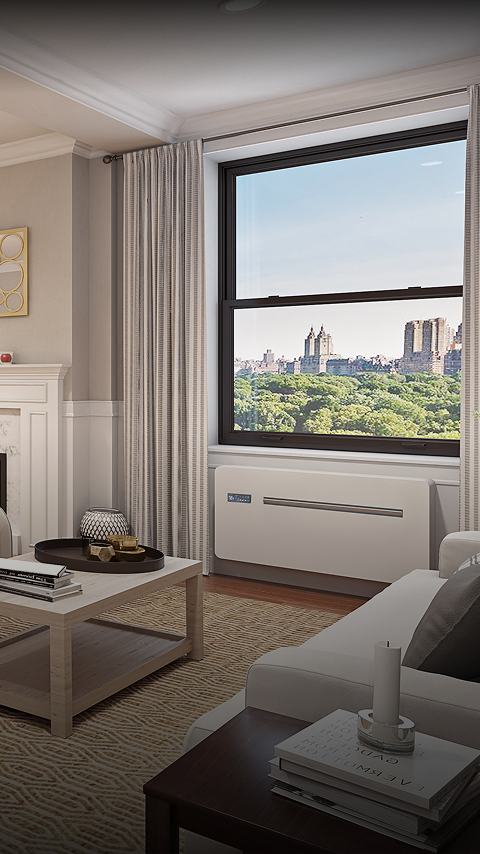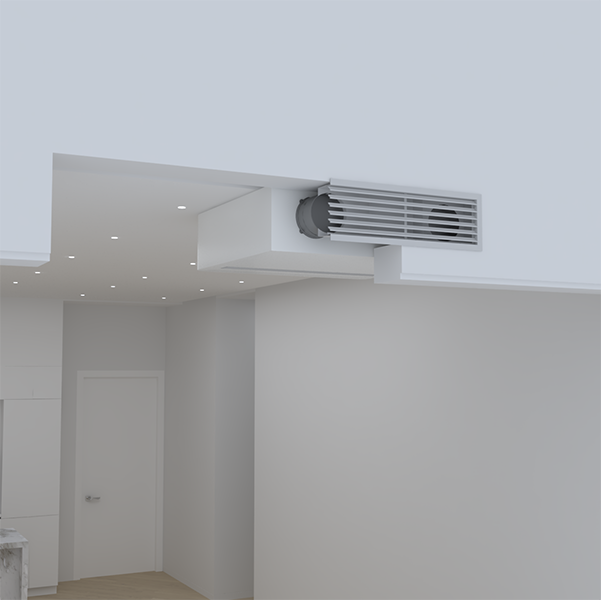TodayÕs buildings call for mechanical systems that respect both design and functionality. HVAC no longer needs to interrupt visual harmony or claim exterior space. These compact solutions fit neatly into walls or ceilings, delivering high-performance heating and cooling without architectural compromise. Their minimal footprint supports discreet installations in luxury residences, heritage renovations, and urban settings alike. With fewer moving parts and no outdoor unit, they provide consistent comfort with clean lines and less visual impact, without giving up the power of a ductless heat pump.
Energy Efficiency with Long-Term Return
For buildings targeting reduced emissions and optimized energy consumption, modern HVAC systems need to do more with less. The latest ductless heat pump models deliver heating and cooling without requiring conventional exterior units, resulting in a lower overall energy draw and simpler compliance with local green building standards. These systems regulate load demand with precision, consuming only what is needed while delivering stable indoor environments. That translates to reduced utility costs, less strain on grid infrastructure, and long-term gains in operational efficiency.

Technology That Simplifies Climate Control
Intelligent zoning, adaptive settings, and intuitive user interfaces make this solution ideal for complex builds and fast-track installations. The design eliminates the need for ductwork, reducing install time and project variables while supporting retrofit flexibility. Quiet operation ensures compatibility with sound-sensitive spaces like hotels, libraries, and high-end condos. The systems can integrate with BMS platforms or work independently, giving facility managers and installers confidence across a range of use cases. European engineering ensures reliability and precision, even in temperature-extreme regions.
Seamless Cooling with Architectural Freedom
Climate control should never limit design intent. Whether the goal is aesthetic purity or functional adaptability, a ductless air conditioner allows developers and architects to preserve creative vision while meeting climate specs. Without the burden of exterior condensers or mechanical enclosures, the system fits where others cannotÑinner-city apartments, historical buildings, or low-visibility rooftops. The inclusion of a ductless air conditioner in mid-rise construction helps streamline approvals and avoid conflicts with zoning or external unit placement restrictions.

Eco-Innovation for Future-Proof Projects
Sustainable architecture thrives on smart mechanical choices. These indoor systems are built for buildings that prioritize environmental stewardship without losing performance. A ductless air conditioner uses less refrigerant, minimizes acoustic output, and often contributes to LEED or similar certifications. These models are ideal for green retrofits or eco-first new developments, offering consistent temperature regulation without constant maintenance. Their smaller footprint makes them easier to transport, install, and upgrade, key for projects navigating space constraints or environmental guidelines.
Conclusion
The shift away from traditional HVAC marks more than a design upgradeÑit signals a new way to approach building performance, aesthetics, and sustainability. From luxury multi-units to high-density retrofits, these heat pumps and air conditioners provide elegant and efficient alternatives to conventional systems. Every installation supports innovation, from form to function. For full details on available units, system specifications, and installation resources, visit ephoca.com to explore how climate control is evolving for tomorrowÕs buildingsÑquietly, efficiently, and with intention.
Blog Source Url :- https://ephoca.blogspot.com/2025/08/quiet-climate-control-with-elegant.html



.jpg)






